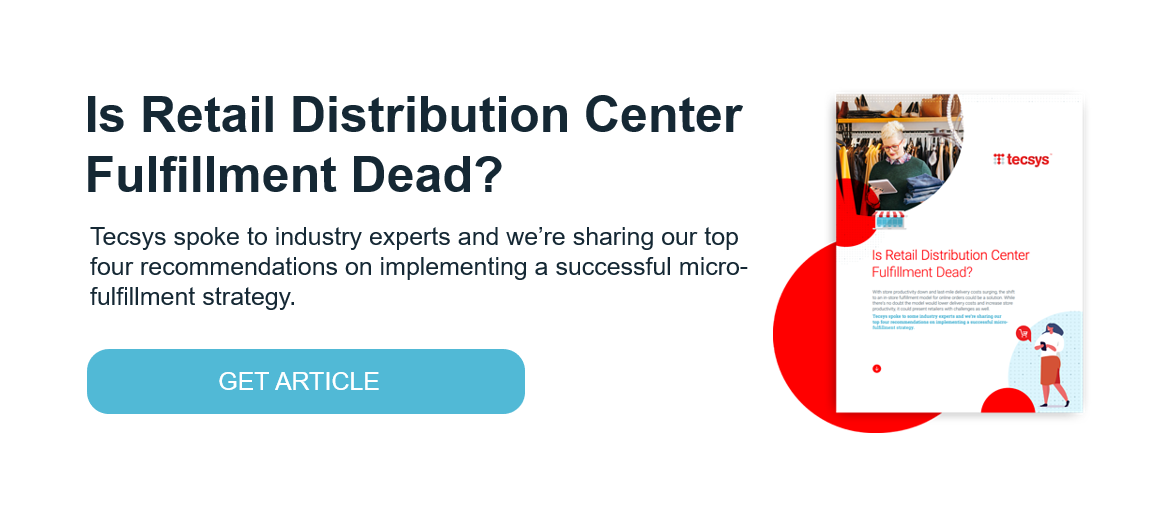Should Micro-Fulfillment Be Part of Your Retail Fulfillment Strategy?

Should Micro-Fulfillment Be Part of Your Retail Fulfillment Strategy? was originally published in Retail Info Systems News
With storefront productivity down and home delivery costs surging, the shift to an in-store fulfillment model for online orders is gaining steam. While there’s no doubt the model would lower delivery costs and increase store productivity, it could present retailers with challenges as well.
As retailers start to look more closely at micro-fulfillment as a way to optimize their last mile, here are some key strategies that established micro-fulfillment operations employ today as part of their successful fulfillment networks.
Store Operations Optimization
Warehouses are structured and organized for efficient picking and packing. A store’s stockroom can be organized similarly, with signage, quick access and more popular items easily available. From a staffing and people perspective, it is essential that store associates receive the proper guidance, training and structure to know what their new role requires and how to prioritize tasks.
Overall, the complexity of instituting this type of in-store fulfillment program — for both stocking and labor management — will depend upon the size of store and the breadth of products offered.
Hub and Spoke Omnichannel
The hub and spoke model in omnichannel means smaller format and pop-up stores are feeder locations to larger stores, which have the space to designate pick-pack and hold zones. These larger “hubs” would also carry more inventory for order fulfillment purposes.
If some inventory is missing for a customer order, you can bring in merchandise from the “spoke” locations and consolidate the order into one delivery. Hub stores can also have specialized staff at each location responsible for picking and packing.
Integrated Micro-Fulfillment Platform
It is critical for retailers to properly account for inventory whenever an item is consumed (either online, in-store or at the warehouse) and that stock levels are refreshed regularly and visible to both customer and employees. This is easily achievable with an omnichannel retail solution that integrates your supply chain with the logistics end of operations.
A distributed order management system combined with an inventory management system (with RFID scanning) would enable order fulfillment from stores while also capturing spent inventory (through scans, online orders or POS) providing a real-time view of inventory, regardless of where or when an item is picked.
Agile Inventory Replenishment
There’s no question that balancing inventory levels over potentially hundreds of locations will present more complexity than managing inventory in a single location. For an in-store fulfillment strategy that ensures customer satisfaction while minimizing costs, retailers will need to develop dynamic inventory planning and allocation processes to track sales and closely monitor stock levels.
This would also mean strong collaboration between digital and planning teams to forecast demand by geographic region and ramp up stock if necessary.
Indeed, micro-fulfillment ushers in complexity to retail operations, but the accompanying competitive advantages are substantial. Retailers have the potential to increase overall efficiency, while reducing last mile shipping costs and improving customer satisfaction. That means delivering on brand promise, improving customer loyalty and maintaining profit margins at the same time.
Should retailers introduce micro-fulfillment into the mix? Absolutely. But it’s not just a flick of the switch. Smart planning and implementation are key. In addition to technological investments, retailers will need to delve into business processes to ensure they are cost-effective and resilient to sudden business shifts.
Successfully implementing a micro-fulfillment strategy can make a dramatic impact on the bottom line and opens the door to more omnichannel strategies.




